Bass Creek Plant Information
The following is a listing of plants commonly found at Bass Creek the focus is on wetland plants near the first river access point off S. Cedar Drive and in the swampy area adjacent to the creek.
The Bass Creek Recreational Area is managed by the State of Michigan Department of Natural Resources (DNR).
Plants are organized by growth form and phylogenetic grouping as follows:
|
Herbaceous |
|---|
|
Fern |
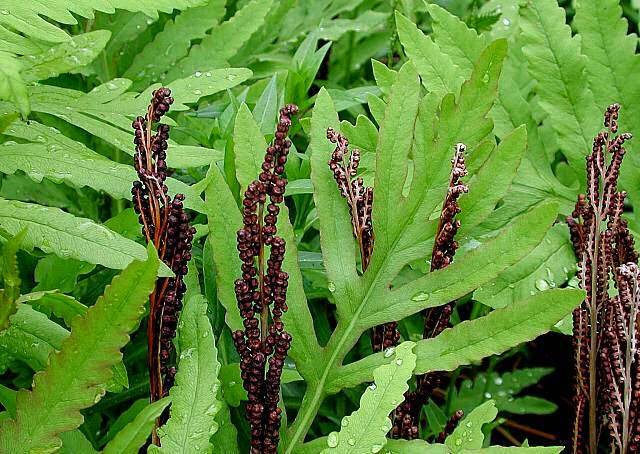
Onoclea (sensibilis) – sensitive fern
Dryopterid-aceae
Medium fern; leaves upright with petioles roughly same length as blades; sterile leaves deciduous and surrounding fertile leaves, once pinnately divided at base, opposite, deeply cleft upward wavy margined or coarsely toothed, ֎with a winged central axis; ֎dimorphic fronds (fertile and sterile leaves appearing distinctly different); fertile leaves contain spore clusters produced in summer and overwinter, leaves divided in beadlike pinnules with in rolled margins covering the sori; sori round and covered by indusia; swampy woods, wet shores, wet meadow margins.
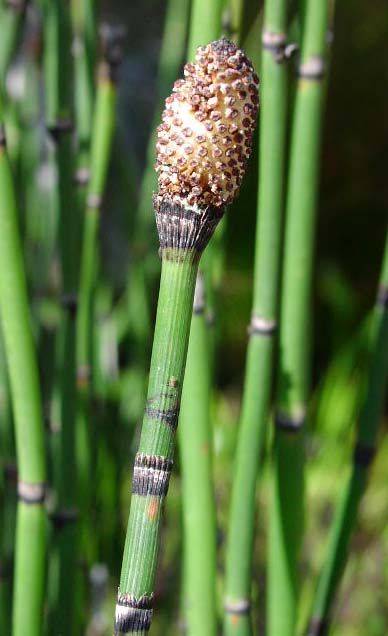
Equisetum sp. – horsetail; scouring rush
Equiset-aceae
Medium fern; ֎stems erect, hollow and ֎jointed; no true leaves, ֎rough texture due to silica in the tissue; ֎spores from a terminal cone; shallow water, moist ground. Horsetails refer to species with branching stems, whereas scouring rushes refer to species without branches. Typically scouring rushes persist through the winter. Both make good pot scrubbers when camping. Often invasive, use caution if you plant it in your yard because it can take over and with its deep rhizomes it is difficult to contain.
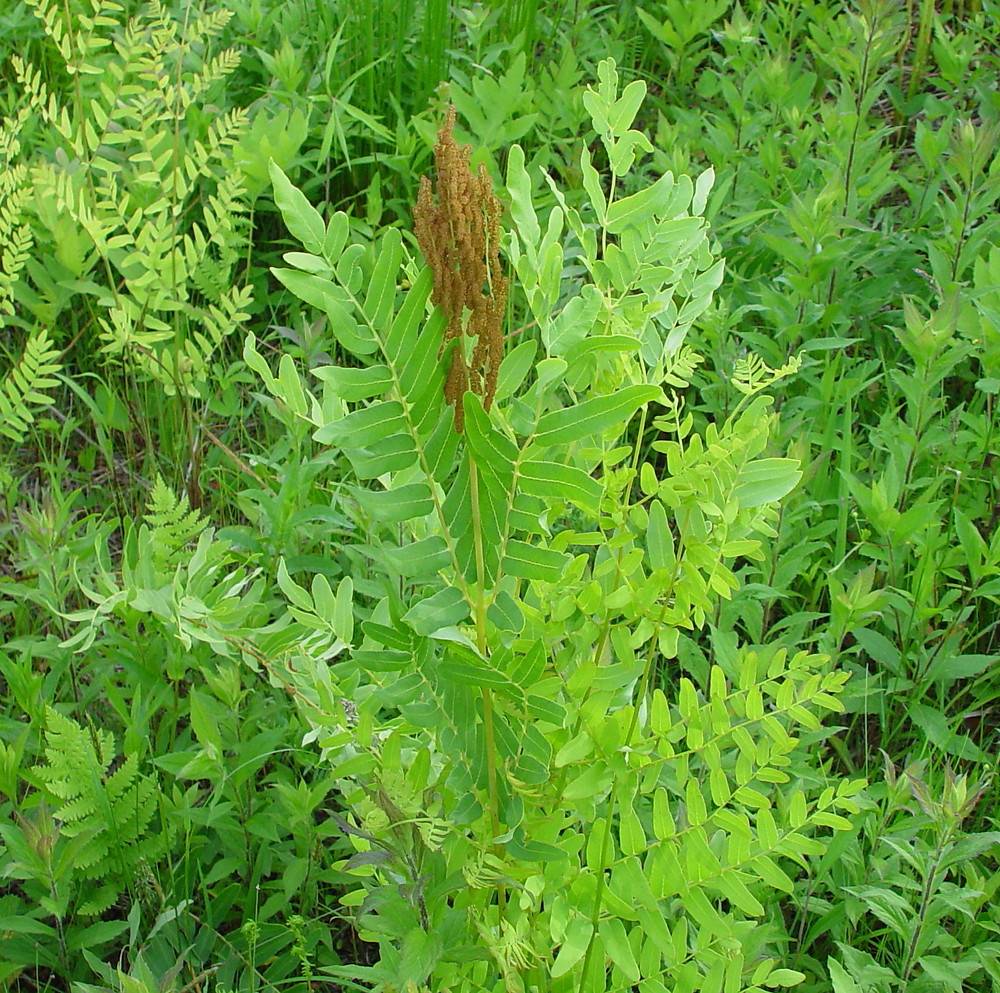
Osmunda regalis - royal fern
Osmund-aceae
Large fern; fronds dimorphic; ֎all fronds bipinnate, ֎large and semi-coarse, oblong, ovate; leaflets not opposite, 6 or more pairs; stipe (frond axis) smooth or glabrous, some fronds sterile, some ֎with fertile pinnae at their tips with pinnae smaller; bogs, lake fronts, stream-banks, meadows.
Dicot (Herbaceous)
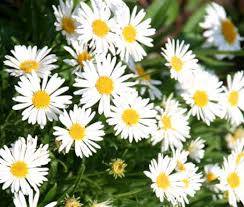
Aster sp. – aster (recently split into Canadanthus, Dellingeria, Durybia, Oclemena, Sericocarpus, Symphyotrichum)
Aster-aceae
Herb; leaves variable but usually lanceolate with a tapering point; ֎flower heads with a yellow disk, rays are blue, purple or white.
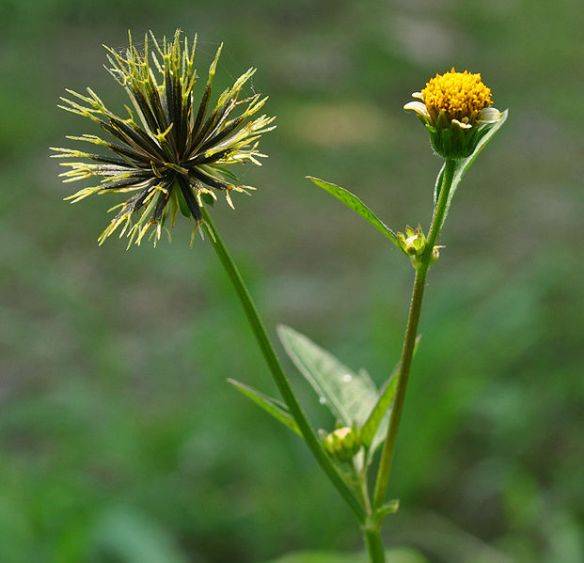
Bidens sp. – begger-ticks
Aster-aceae
Herb; flowers lacking rays, ֎bright yellow; leaves variable mostly toothed and lanceolate, opposite; with distinctive ֎barbed ‘tick’; extremely variable plant and difficult to get an exact determination on species; shores, swamps, wet meadows.
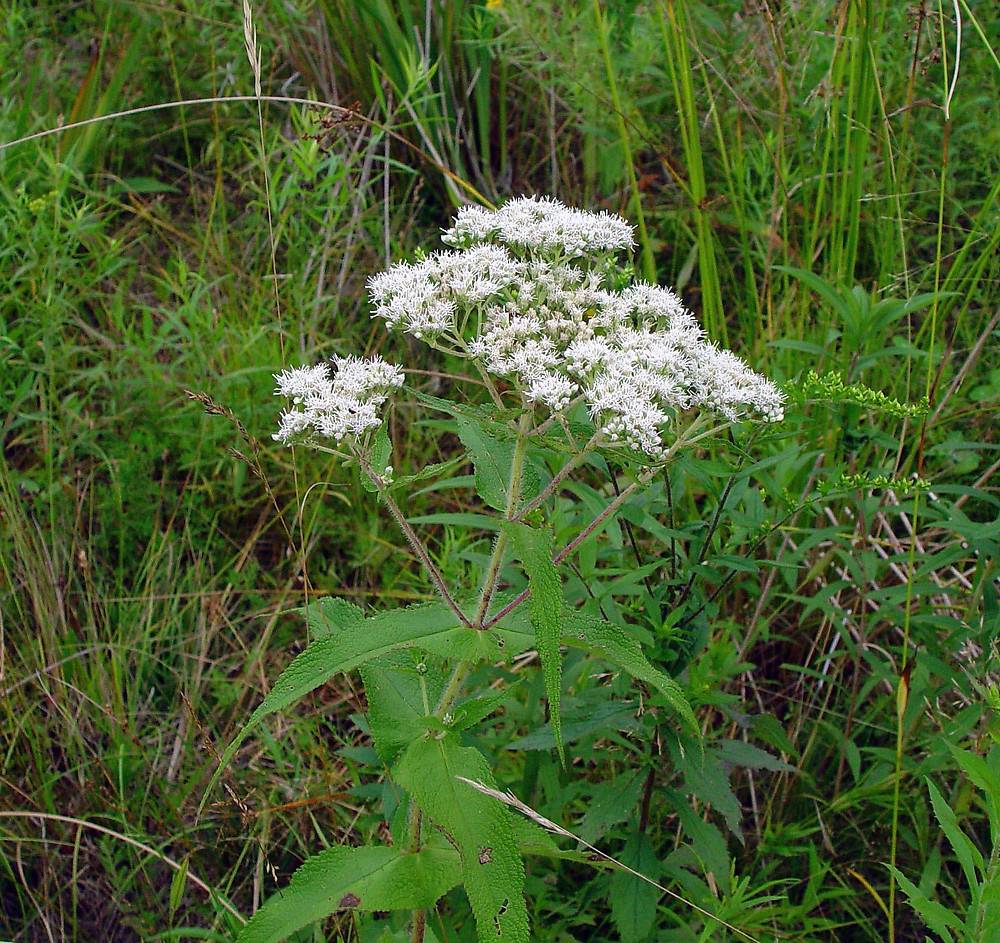
Eupatorium perfoliatum – boneset
Aster-aceae
Medium herb; leaves wrinkled and veiny, ֎united basally around the stem (perfoliate); stem and leaves hairy; white flower; low ground and swamps

Solidago sp. – goldenrod
Aster-aceae
Variable herbs; leaves ribbon-like with a central vein; upper part of stem branched; inflorescence variable, flowers ֎yellow, in small numerous heads crowded in small clusters; wet meadow, shallow marshes, shores.
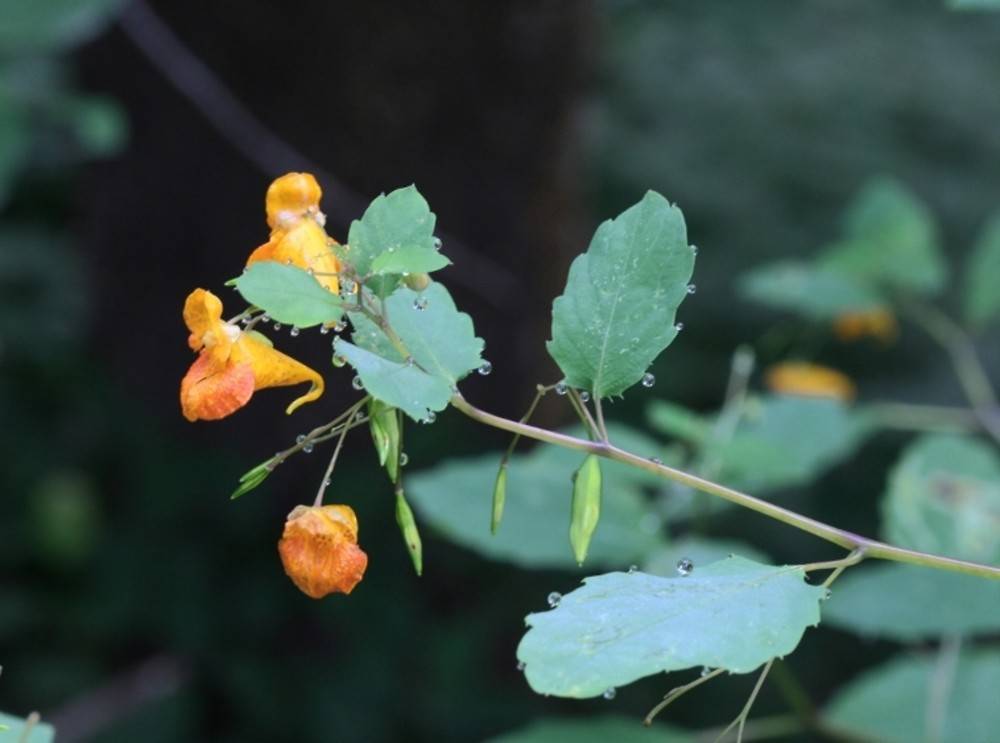
Impatiens capensis – spotted touch-me-not, jewel weed
Balsam-aceae
Medium herb; stems very succulent, ֎nearly translucent and wilt easily; leaves alternate, delicate; flowers with a long ֎spur, dangle on a long stalk. orange, spotted; with ֎‘explosive’ seed pods; moist shady soil, along streams and shallow marsh edges.
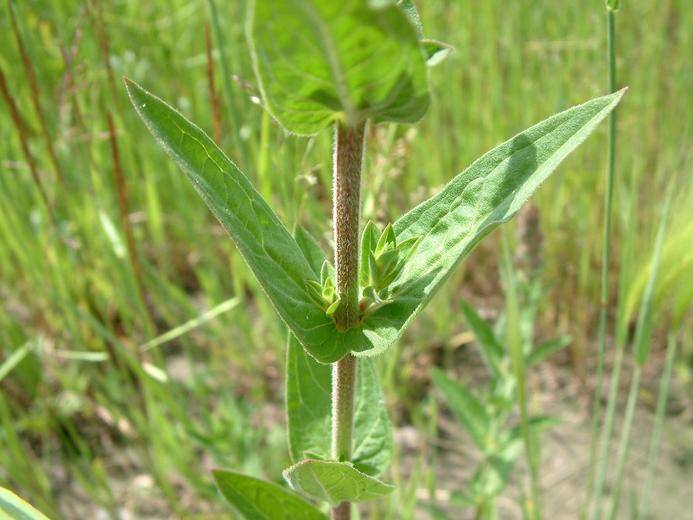
Lythrum salicaria - purple loosestrife
Lythr-aceae
Large herb up to 2.5m; ֎stems angled, slender, not woody (can be woody as they age); ֎leaves mostly opposite (although often also alternate on the same plant), ֎sessile (no petiole), often almost heart-shaped at base; ֎flowers numerous in long purple spikes; many seeded; wet meadow, shores, shallow marsh. This invasive is common throughout West Michigan and originally escaped from cultivation and was planted as a pretty garden plant. If you see only a few, then remove them, but do not kill native loosestrifes.
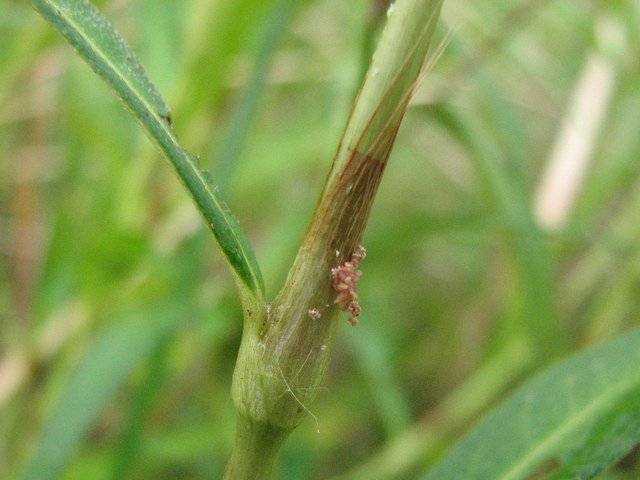
Polygonum sp. - smartweed (split into Bistorta, Fallopia, Persicaria)
Polygon-aceae
Herb; leaves long, narrow, lance-shaped; flower pink or whitish spike-like clusters, without petals, made up of sepals; “knotted” or zigzag stems, swollen sheaths or joints with ֎papery sheath (ochrea) at each joint; ֎winged achenes; very shallow marshes, wet places, swales, wet meadows, swamps.
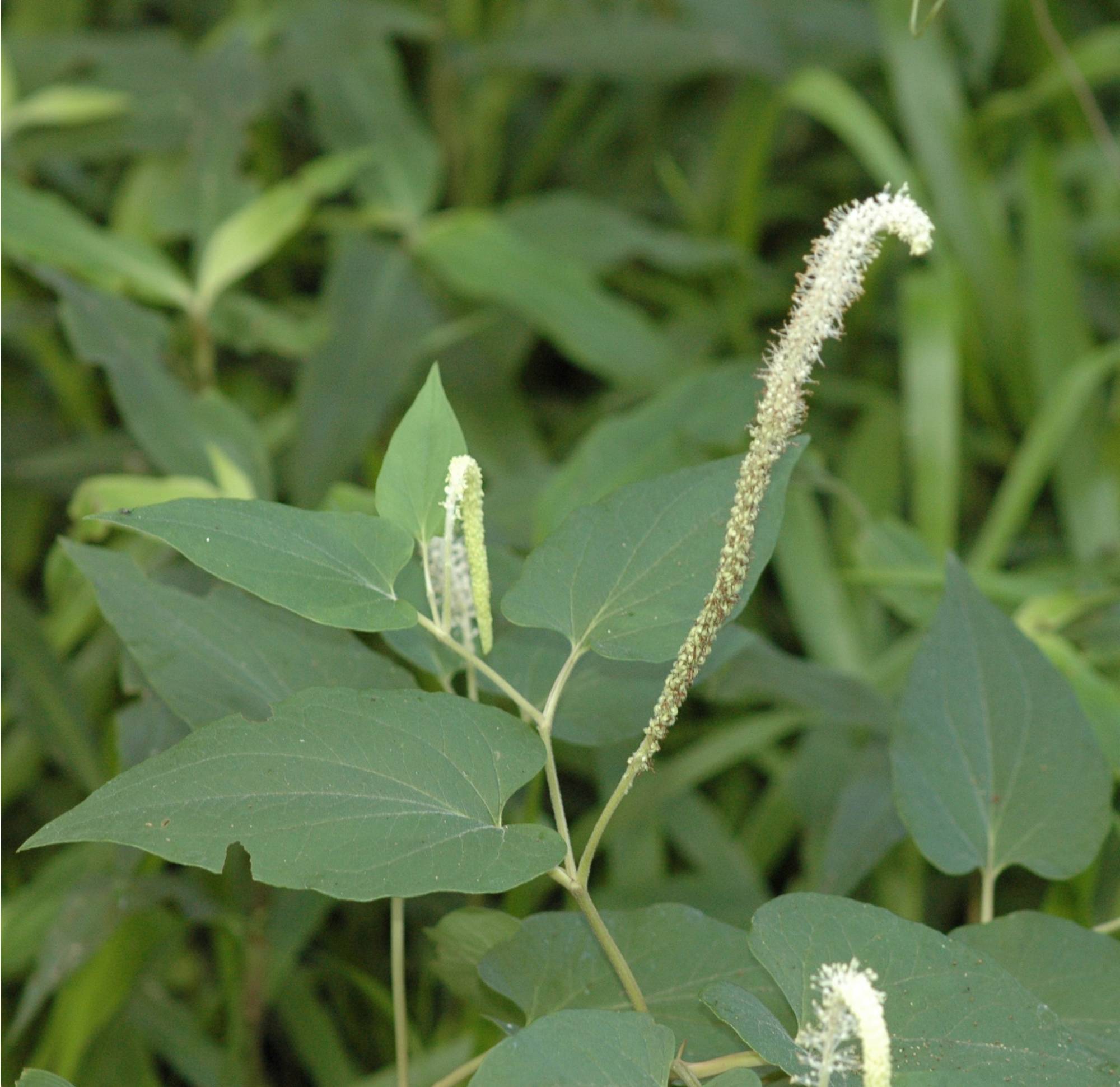
Saururus cernuus - lizard’s tail
Saur-aceae
Medium to large herb 2-5’; ֎leaves heart-shaped, base of petiole surrounds the stem, leaving a scar which encircles the stem; interesting growth pattern with the stem often growing in the ֎shape of a spiraling staircase; flowers white, in ֎long slender spikes, drooping or “nodding” near the tip; swamps, floodplains, wet woods, muddy shores, margins of rivers, streams.
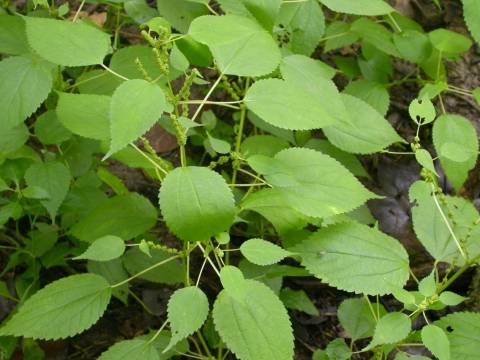
Boehmeria (cylindrica) - false nettle
Urtic-aceae
Medium herb 16-40”; stem hollow, 4-angled; leaves opposite, ֎NO stinging hairs, well stalked, coarsely toothed, ovate; ֎flowering stalks upright with ֎cylindrical clusters (looks like you gave a kid the ice cream scoop and left the room), often with leaves at the terminal end of the inflorescence, ֎from the leaf axis, green; floodplains, swamps.
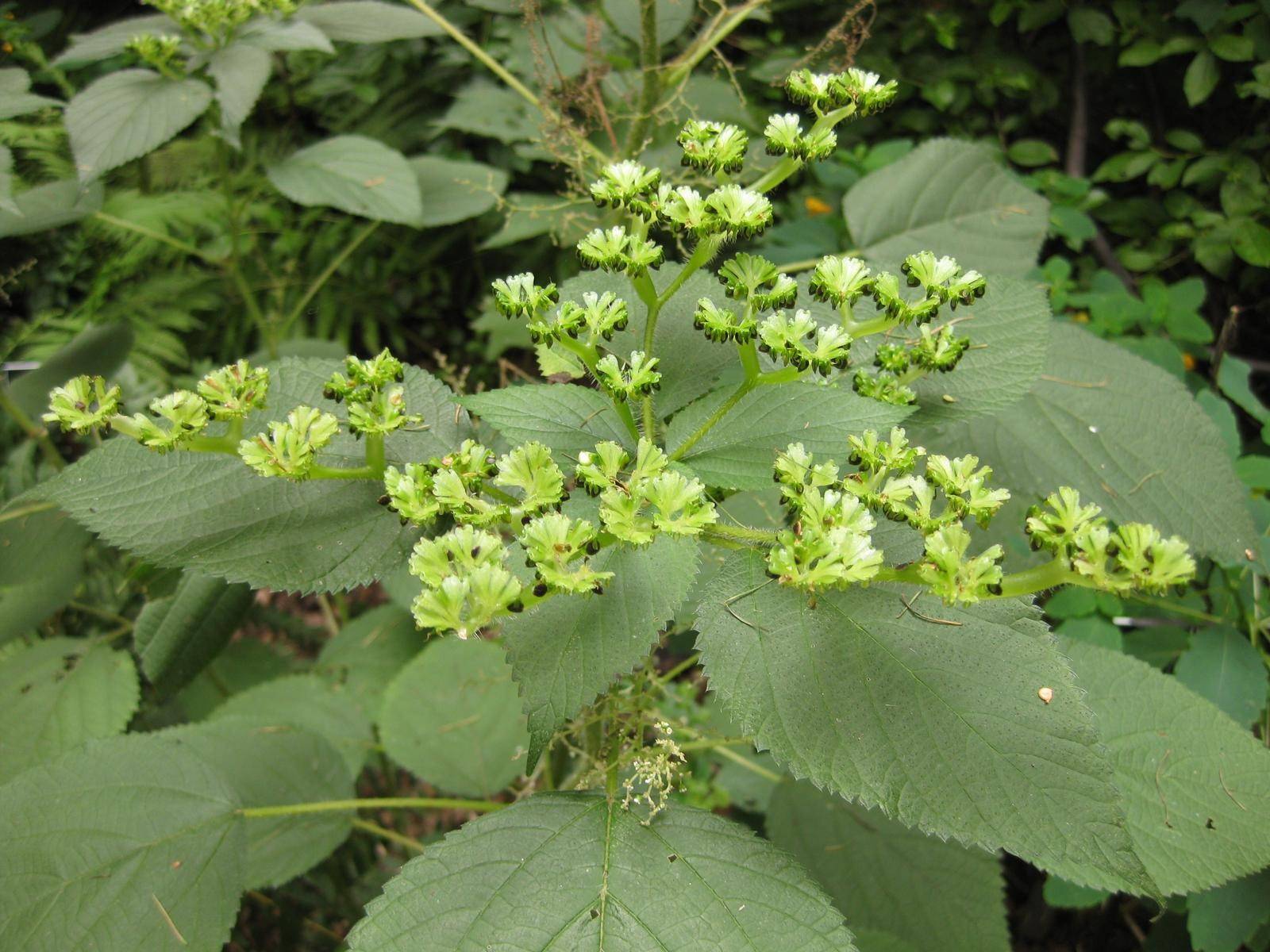
Laportea (canadensis) - wood nettle
Urtic-aceae
Medium to large herb; stem hollow, 4-angled; ֎leaves alternate, toothed, ֎with stinging hairs; ֎flowering stalks branched, upright, flattened and ֎mostly terminal (some may be from lower leaf axis but the vast majority will be at the top of the plant), fruit a strongly compressed achene; floodplains, stream banks, swamps.
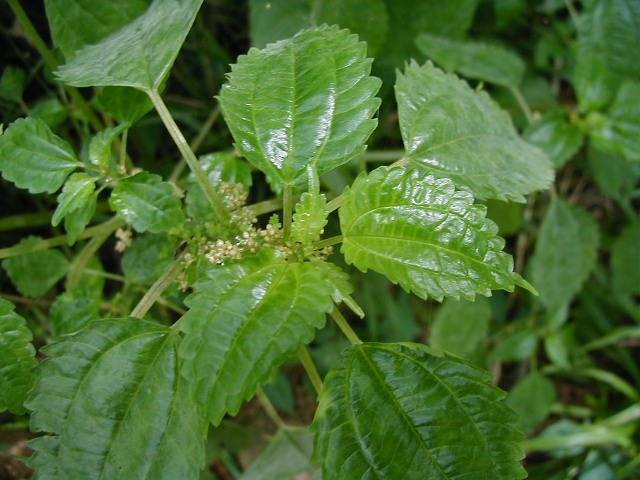
Pilea pumila - clearweed
Urtic-aceae
Small to medium herb l 4-20”; ֎watery-appearing with translucent stems; nettle-like in appearance, ֎NO stinging hairs; leaves opposite, short, with few teeth; flower cluster short, curved, drooping, from leaf axis in ֎branched clusters (some may be terminal but ֎many more from lower leaf axis), green; floodplains, swamp forests, stream banks, low rich woods.
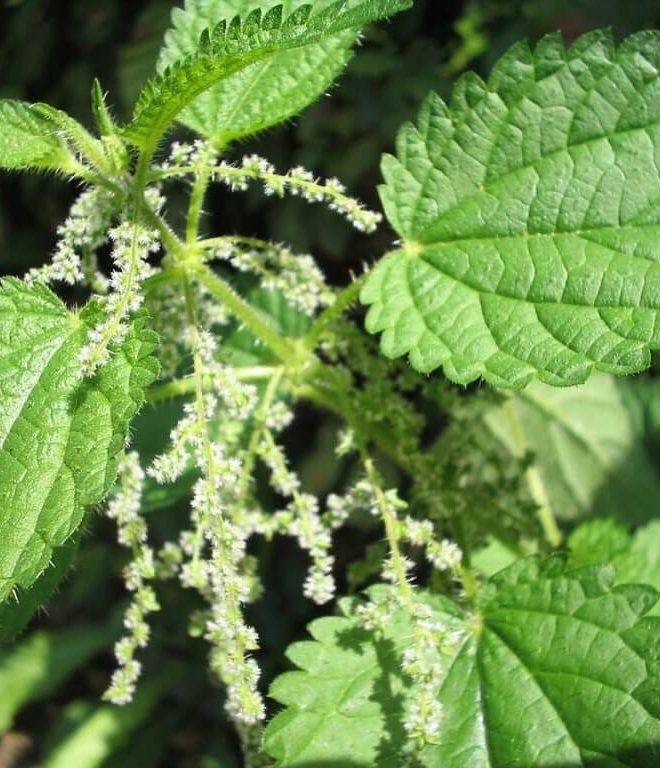
Urtica dioica - stinging nettle
Urtic-aceae
Medium to large herb up to 4’; ֎with stinging hairs; stem hollow, 4-angled; ֎leaves opposite, coarsely toothed, heart-shaped clusters; flowers tiny green, in ֎clusters drooping, from leaf axis; swamps, damp woods and thickets, shores, river banks. Stinging nettles are considered a delicacy when gathered young and cooked (they are a good source on nutrients and have been shown to reduce inflammation); however they should be gathered with care and are greatly irritating when eaten raw (despite this people compete it contests to eat them raw).
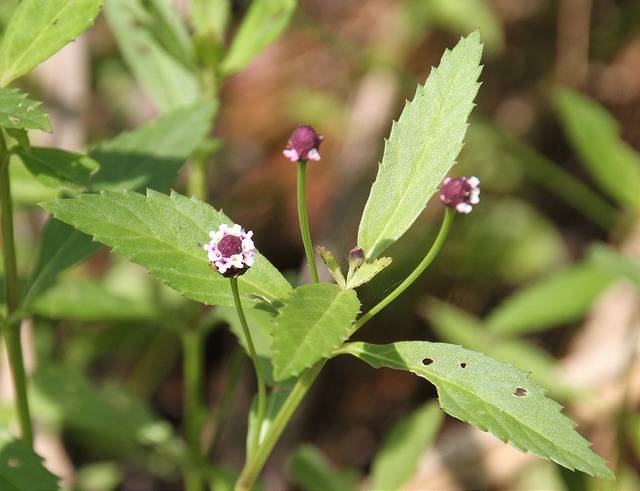
Phyla (lanceolate) – fog-fruit
Verben-aceae
Small herb; leaves opposite, toothed; ֎flowers in round heads or short cylindric spikes ֎on leafless stalks from leaf axis.
Monocot (Herbaceous)
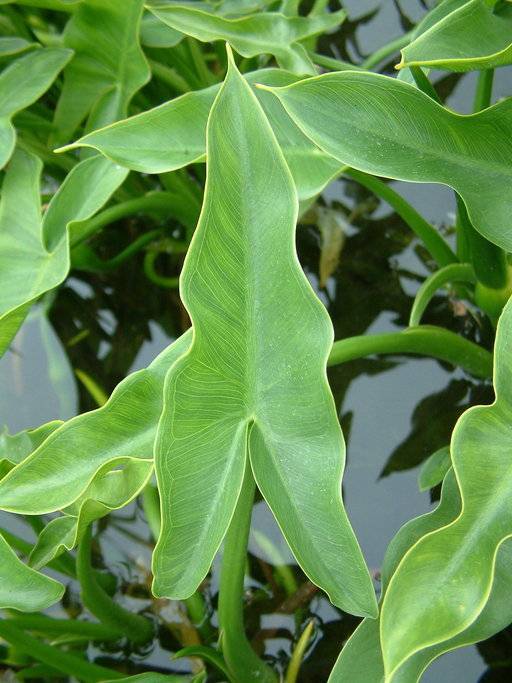
Peltandra (virginica) – arrow arum
Ar-aceae
Aquatic herb, strong rosette; leaves lobed at base (typically sagittate), each basal lobe with a heavy central vein, 3-nerved,with a small ֎veins that run along the entire leaf margin (like a child traced the leaf); spathe green, fleshy, in-rolled; herbs growing on muddy shores and shallow water.
Graminoid (Herbaceous monocot)
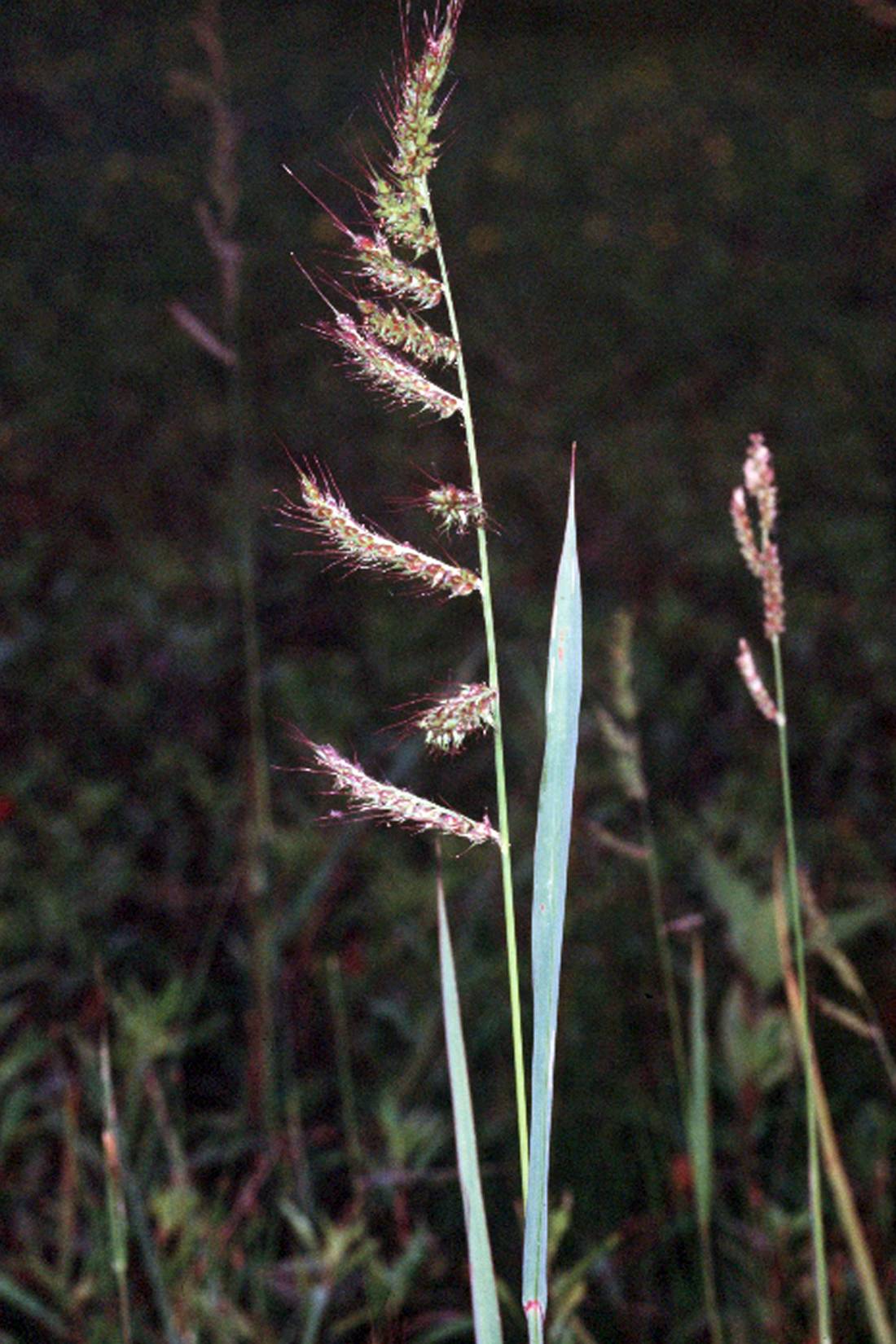
Echinochloa sp. - wild millet
Po-aceae
Medium grass 1-4’, mostly erect, smooth, branching at base; leaves both sheaths and blades smooth ֎spikeletes with small stiff bristles (sticks to your clothing); spikelets arising on ¾ of the stalk (֎flat on one side / planoconvex); marshes, wet meadow, waste grounds, floodplain.
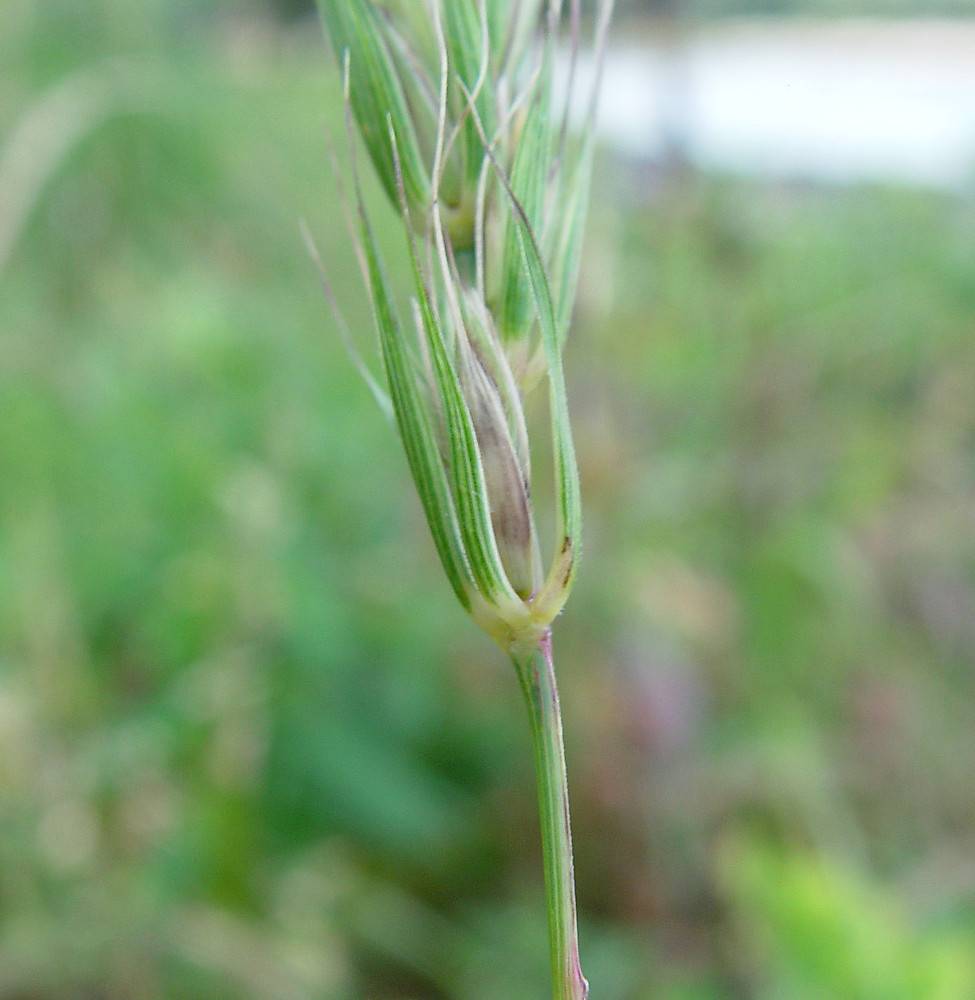
Elymus sp. - wildrye
Po-aceae
Medium grass; leaves flat with very short ligules; ֎spikelets paired at each spike node; head a densely flowered spike; glumes narrow and awn shaped; wet to moist areas.
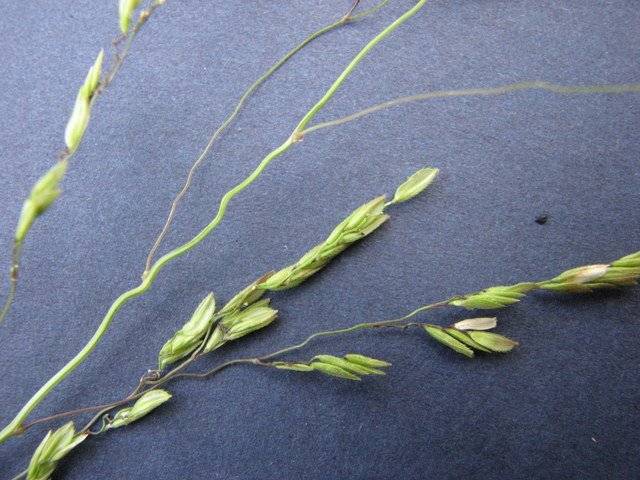
Leersia oryzoides - rice cut grass
Po-aceae
Medium grass 10cm-1m; stems and ֎leaves rough and cutting (feeling sticky); joints of stems with very small stiff bristles or pubescence; inflorescence forming little spikelets, 1.5-2mm wide, fringed margins, overlapping in a single row (֎like a stack of pancakes); wet meadow, shores, shallow marsh.
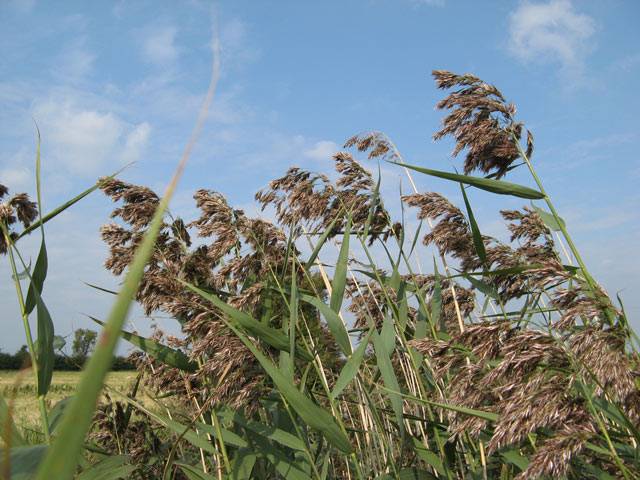
Phragmites communis - reed grass
Po-aceae
Large grass ֎up to 5m; leaves large, pennant-like, up to 5cm wide; rhizomonous and growing in clumps or colonies; inflorescence feathery; wet meadow, shores, ditches, shallow marshes.
|
Aquatic -herbaceous floating or submerged |
|---|
|
Dicot |
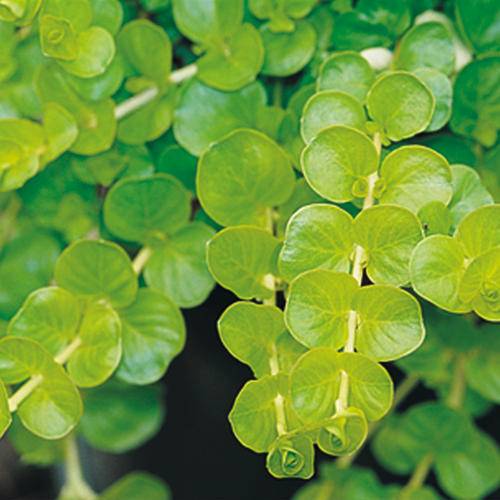
Lysimachia nummularia - moneywort, creeping jennie
Primul-aceae
Small herb in wet soils that can tolerate being submerged indefinitely; leaves ֎opposite, ֎dotted with black glands, ֎round to oval usually in mats; creeping stems low to ground (used as ground cover in landscaping); flowers single in leaf axils with triangular petals; usually shady, wet areas; June-August.
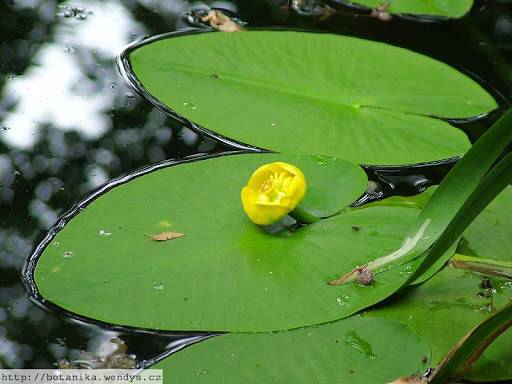
Nuphar sp. - yellow water lily
Nymphae-aceae
Floating or emergent herb; large floating leaves, ֎leaf blades oblong to oval or heart-shaped; underground stem (rhizome) thick and fleshy (֎sometimes firm petiole, may have emergent leaves); floating flower, with ֎rounded yellow petal-like sepals.
|
Vine -herbaceous or woody |
|---|
|
Dicot |
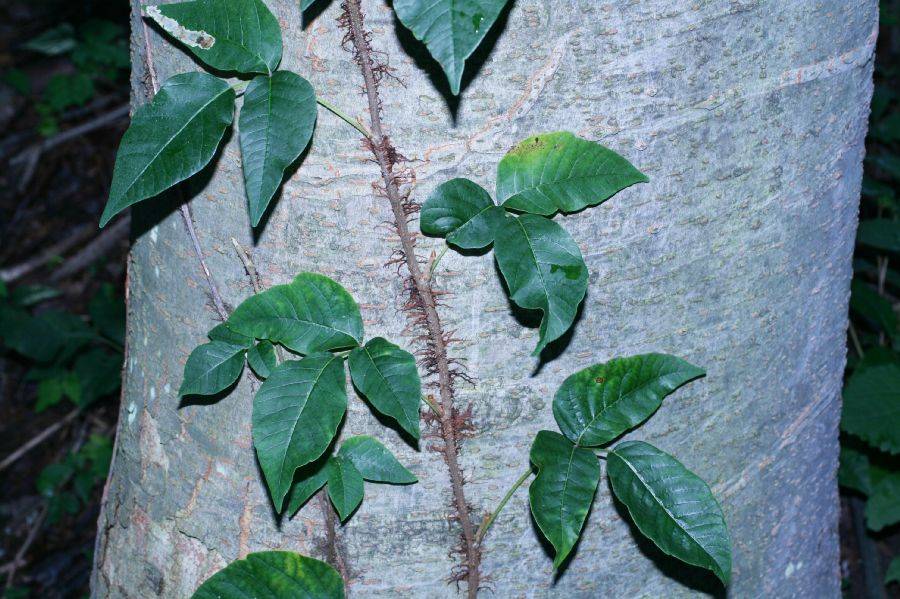
Toxicodendron radicans – poison ivy
Anacardi-aceae
Growth form variable: trailing or climbing vine, small shrub, ground cover; leaves ֎alternate, ֎irregularly serrate, ֎trifoliate, dull green, often w/ toothed leaflets, 4-14”; fruit is a cluster of white berries (drupe), Aug-Nov; vines with hair-like projections when growing on tree trunk.
Causes allergic reaction.
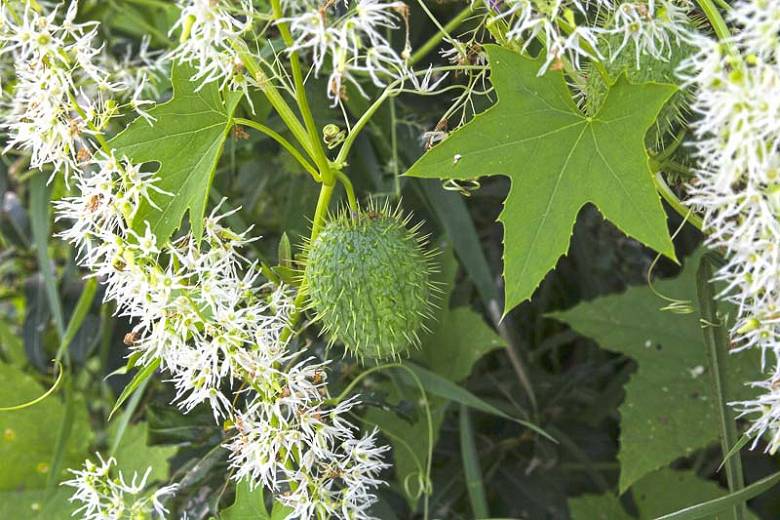
Echinocystis lobata – wild cucumber
Curcurbit-aceae
Annual herbaceous vine; leaves distinctive with ֎3-7 sharp triangular lobes; 3-8cm petiole; with long ֎tendrils; flowers white; distinctive small green roundish ֎spiky cucumber-like fruit 3-5cm long (not edible). Often sold at native plant sales because of its very abundant fragrant flowers in late summer; after maturing the fruit open at the base and drop large seeds that can be easily gathered and planted. Once established they can spread easily (although only if you let the fruit ripen because they are an annual).
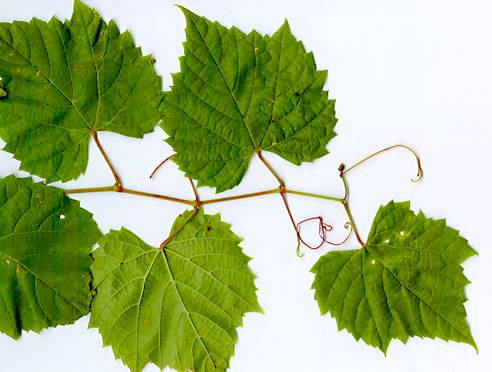
Vitis sp. - grape
Vit-aceae
Woody vine; ֎bark shredding and peeling, leaves alternate but often with a tendril opposite the leaf, with ֎grapes.
|
Shrub -woody |
|---|
|
Dicot |
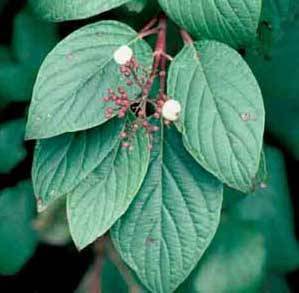
Cornus sp. – dogwood
Corn-aceae
Shrub or small tree; entire leaves usually opposite; ֎leaf veins follow the smooth leaf edges toward the tips; ֎silky sap apparent between veins when leaves are gently broken; twigs often reddish or purple; leaf buds with only 1 pair of scales; flowers 4 petaled with greatly reduced or no calyx, some species with showy bracts; typically very hard wood.
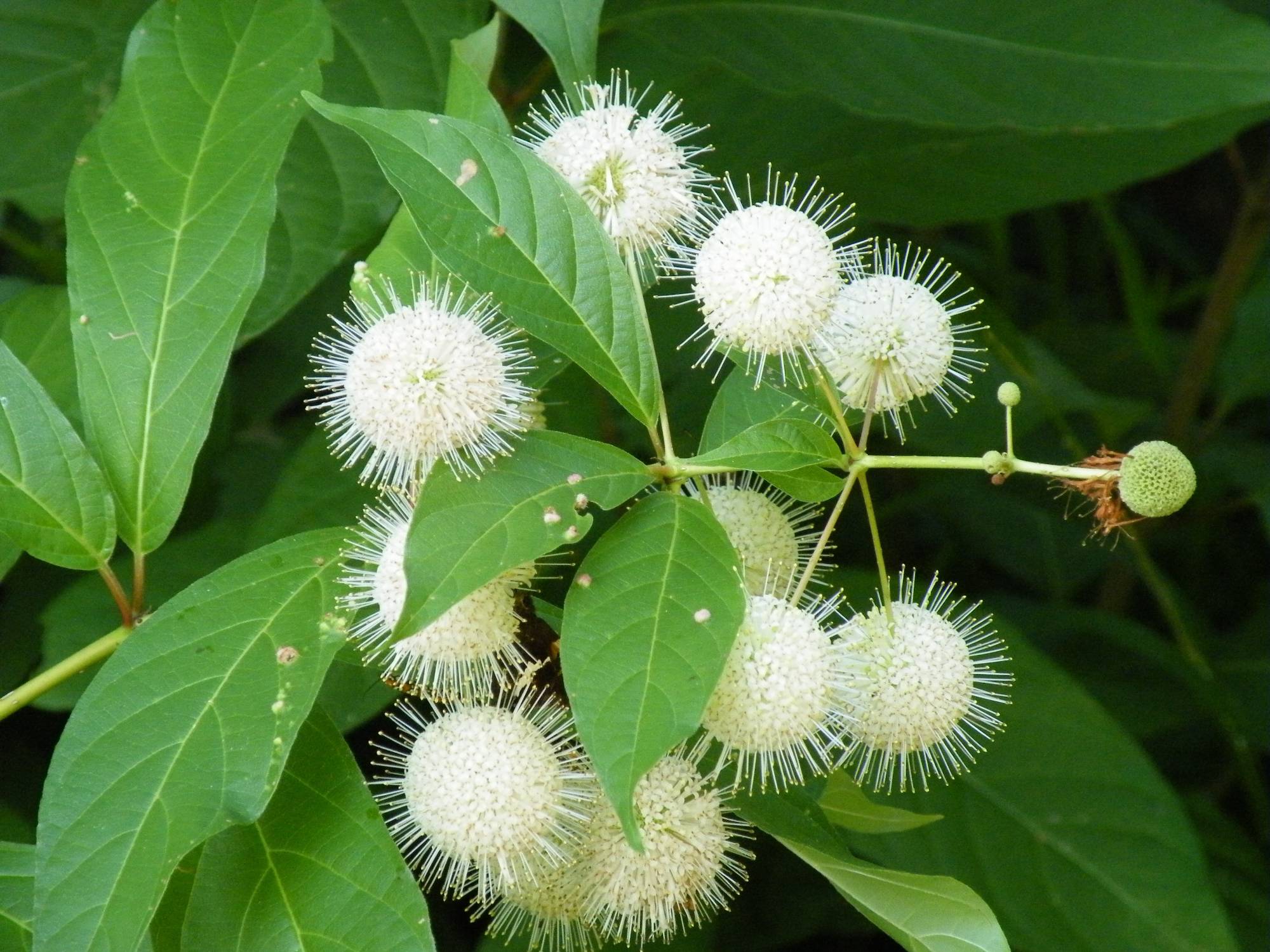
Cephalanthus occidentalis - buttonbush
Rubi-aceae
Medium shrub; ֎leaves opposite or whorls of 3, 2-3” long, waxy and thick, elliptic, sharp pointed; flowers in ֎spherical ball-like heads at the end of a long stalk in the axils of the upper leaves, whitish in color; shallow marshes and ponds, scrub/shrub, floodplains along streams.
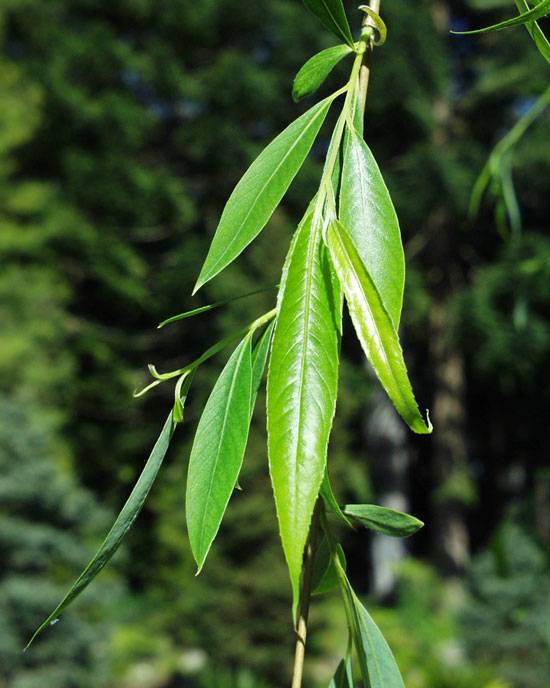
Salix sp. - willow
Salic-aceae
Shurbs and trees; often difficult to identify to species; ֎leaves alternate, usually lanceolate, ֎typically long and narrow; ֎flowers arranged in catkins; characteristic of stream-banks and moist conditions, floodplains, pond edges, shores; young branches commonly fall and make new individuals. Salicylic acid (aspirin) in the bark of nearly all species throughout the world, you can chew on a young twig (eating large dry bark is undesirable and less effective).
|
Tree -woody |
|---|
|
Dicot |
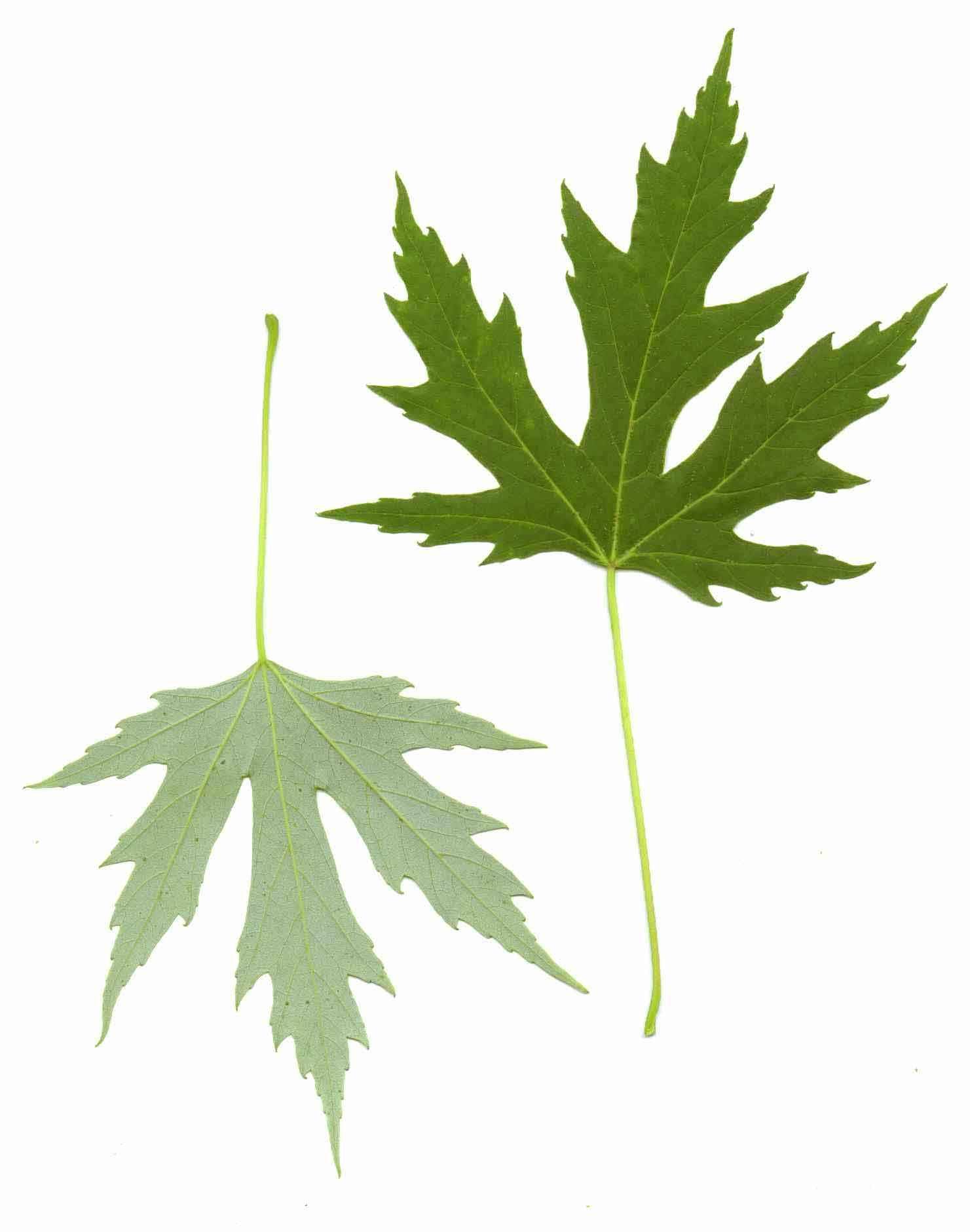
Acer saccharinum – silver maple
Acer-aceae (new name Sapind-aceae)
Tall tree 40-60’; leaves ֎opposite ֎very deeply lobed (3-5), slightly silver/whitish on lower surface; twigs and buds reddish; moist soils, stream-banks, floodplain.
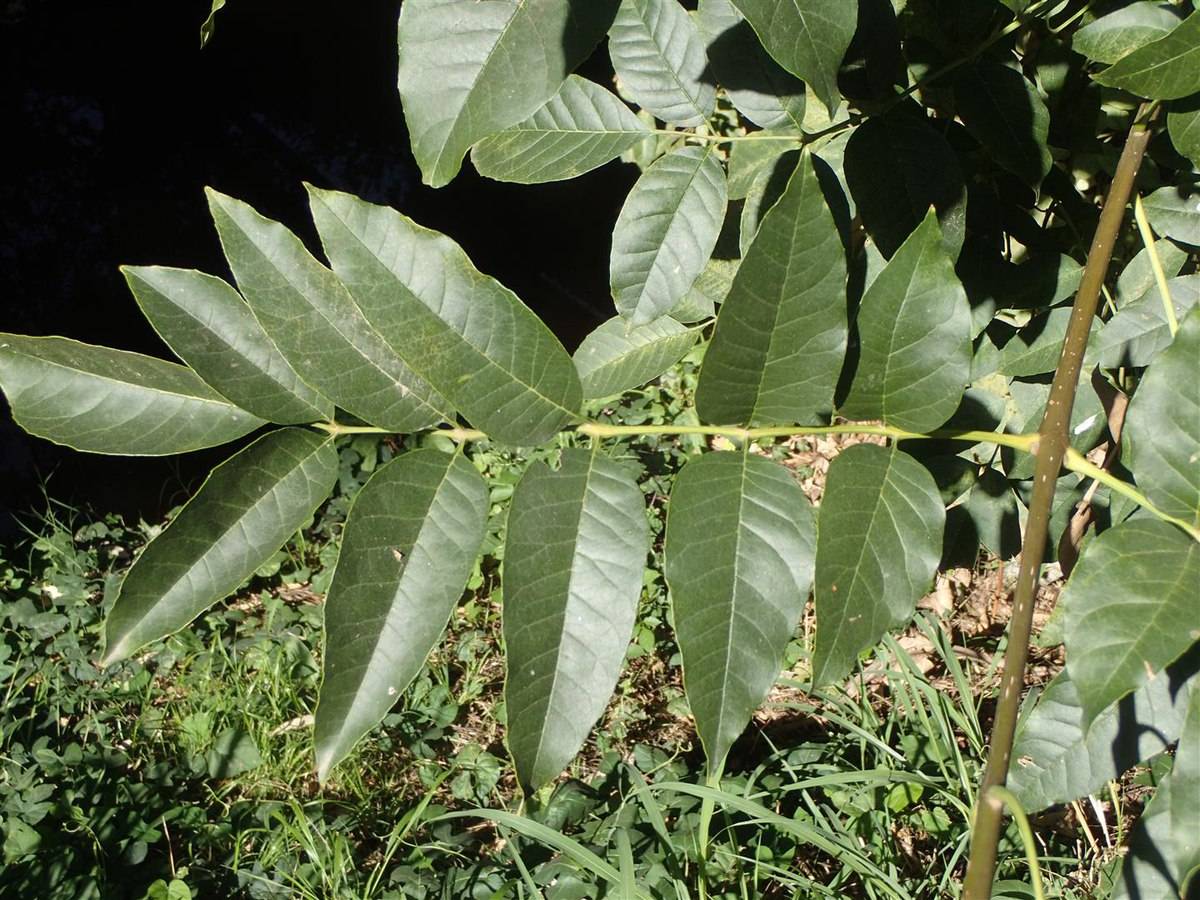
Fraxinus sp. - ash
Ole-aceae
Tree; leaves compound ֎opposite, ֎5-9 leaflets, short stalked, toothed or not, 10”-12”; twigs hairless, mostly shiny; flowers in April; fruits wedge-shaped; lowlands, floodplains, moist woods.
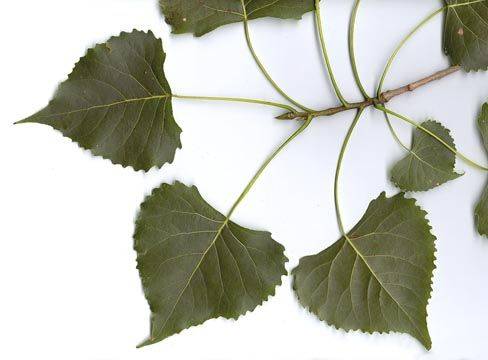
Populus deltoides - cottonwood
Salic-aceae
Large tree up to 100’; ֎leaves triangular in shape with distinctive toothed margins (similar to a cartoon of a ֎cresting wave), 3-6” long; ֎flat petioles; buds are gummy and stick to your shoes as small branches fall regularly; twigs hairless; wet grounds, swamps, forested bottomlands. In the dunes cottonwood are common due to their rapid growth and can withstand being buried because of adventitious roots (roots from the stem), in fact often you can find several unusually shaped small trees clustered together that are actually the crown of a buried tree.
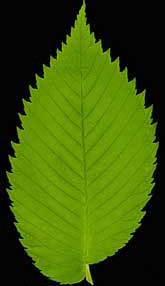
Ulmus americana - American elm
Ulm-aceae
Large tree 80-100’; outer bark consists of alternating pale white and dark brown layers like a sandwich; twigs hairless; leaves ֎doubly serrate ֎alternate, sand papery or smooth or variable, ֎oblique at base, 2-6” long; buds over a 1/4”, light brown w/ dark edge scales; fruit a samara; swamp forests, floodplains, wet bogs, and upland as well.
